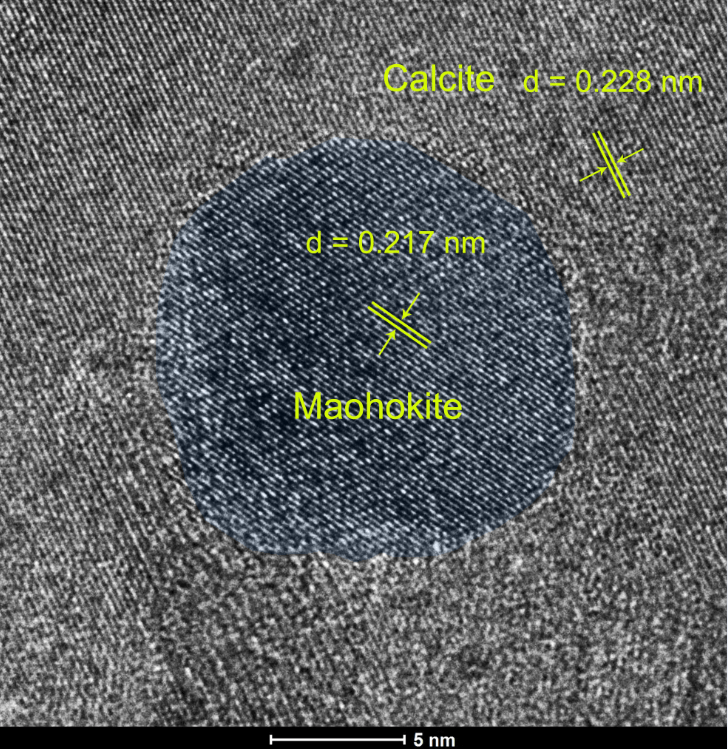Dec 7 2018
Researchers for a long time believed that the lower mantle was made up of bridgmanite (Mg, Fe)SiO3and magnesiowüstite (Mg, Fe)O, in which Fe2+resides. This view was revised when experiments proved that Fe2+simply cannot exist at the temperature and pressure of the lower mantle. What really is present is Fe3+. The two phases (Mg, Fe)SiO3and (Mg, Fe)O both shed Fe2+and, in turn, MgO and MgSiO3remain. However, which mineral hosts Fe3+continued to be a secret.
 Maohokite (Image by CHEN Ming)
Maohokite (Image by CHEN Ming)
Now researchers have a promising answer: Maohokite, a recently discovered high-pressure mineral. It may be what makes up the Earth’s lower mantle together with magnesiowüstite MgO and bridgmanite MgSiO3. Details of this new mineral have been published inMeteoritics & Planetary Science.
Maohokite was discovered by CHEN Ming’s team from the Guangzhou Institute of Geochemistry of theChinese Academy of Sciencesand SHU Jinfu from the Center for High-Pressure Science and Technology Advanced Research. The mineral was christened after Hokwang Mao, in recognition of his significant contribution to high-pressure research.
The mineral and its name have been made official by the Commission on New Minerals, Nomenclature and Classification of the International Mineralogical Association under the designator IMA 2017-047.
Natural minerals can be split into two categories: low-pressure minerals and high-pressure minerals, according to their formation pressures. The temperature and pressure required for the formation of high-pressure minerals can only be provided by the mantle’s environment or the hypervelocity collision between celestial bodies.
Maohokite is the second scenario. It was discovered in shock-metamorphosed rocks from the Xiuyan impact crater in China.
This high-pressure mineral came to be after the decomposition of ferromagnesian carbonate via a self-oxidation-reduction reaction at a temperature >900 °C and impact pressure >25 GPa (a pressure range prevailing at depths more than 670 km below Earth’s surface). In this reaction, Fe2+oxidizes into Fe3+and then later integrates with Mg2+to form maohokite, thus making it a likely important constituent of the lower mantle.
Maohokite, with a composition of MgFe2O4, possesses an orthorhombic CaFe2O4-type structure. The current mineralogical model of the Earth’s mantle exhibits that the ferromagnesian lower mantle is mostly made up of magnesiowüstite (Mg, Fe)O and bridgmanite (Mg, Fe)SiO3. Thus, the fact that maohokite comprises of Mg and Fe, two main components of the lower mantle, only makes the case stronger that maokohite is a significant mineral in the lower mantle.